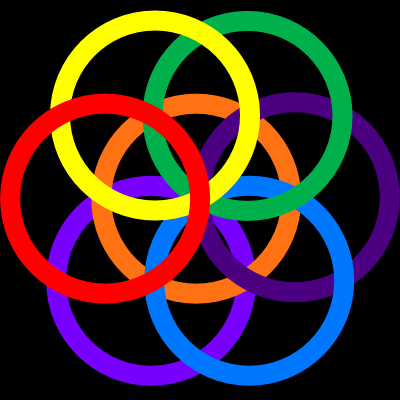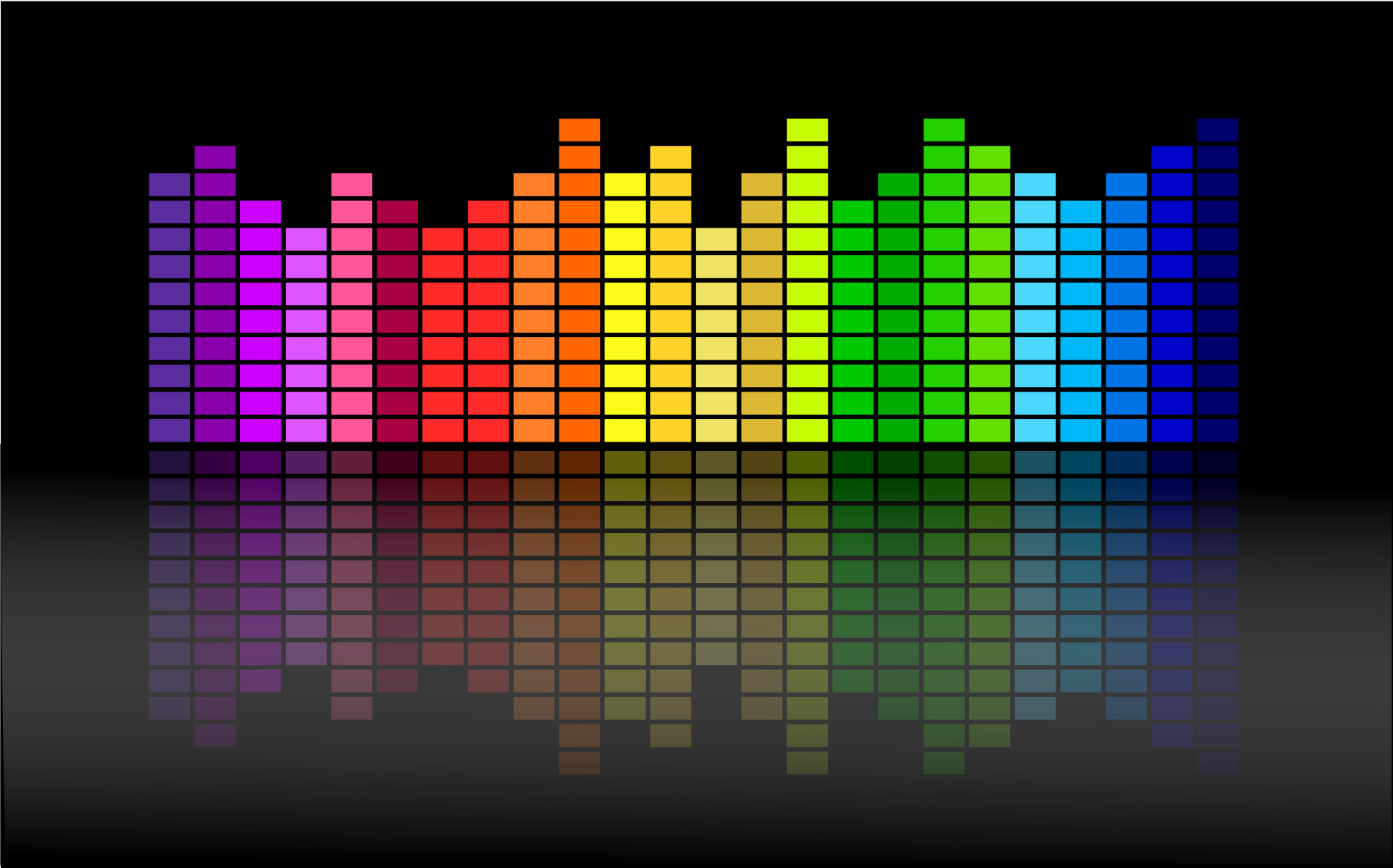The relationship between the frequency and wavelength of light is governed by the equation:
where:
- f is the frequency of the light (in hertz),
- λ (lambda) is the wavelength (in meters), and
- c is the speed of light in a vacuum (∼ 3.00 × 108 meters per second).
This formulae describes the inverse relationship between wavelength and frequency— when one increases, the other decreases.
And there is a ‘magic’ inside this formulae, that when correctly applied to human interaction (or any interaction), effortlessly (meaning with no ‘extra’ expenditure of energy), creates a limitless prosperity and abundance through magnification and multiplication (also known as ‘multiplexing’).
This is light club.
The purpose of light club is to bring to light (and realization) the practical application of this concept of ‘one to many’ and ‘many to one’ at the same time— multiplexed— an instance of meeting across time, space, and ‘spirit’ to realize prosperity and abundance both as a group and individually.
Wave Theory in Interaction (in action)
First, let’s dispel some common misconceptions about “higher” versus “lower”. Many people assume that higher frequencies are inherently better— associated with intelligence, energy, and spiritual enlightenment, while lower frequencies are slow, less evolved, or even negative. In reality, both high and low frequencies serve essential purposes, and neither is superior to the other.
Instead of seeing frequency as a hierarchy, it’s more accurate to view it as a spectrum, where each range contributes uniquely and beneficially to the whole, creating a brilliant completeness with the ‘same’ (as in— no additional required) energies.
Higher frequencies (shorter wavelengths) are fast, dynamic, and energetic. They excel in quick communication, rapid decision-making, and high-stimulus environments. However, they can be overwhelming, fleeting, or lack depth when not tempered by grounding elements.
Lower frequencies (longer wavelengths) are slower, more stable, and deeply penetrating. They are excellent for endurance, deep contemplation, and emotional stability. However, they can be perceived as too slow or resistant to change if not balanced with adaptability.
Rather than choosing one over the other, the key to harmonious interaction is resonance— finding the right frequency for the situation and synchronizing with others multiplicatively.
The Key to Meaningful Interaction
In wave physics, resonance occurs when two or more waves align in such a way that they amplify each other’s energy. The same principle applies to human interaction:
- When two people share similar wavelengths (communication styles, emotional states, thought processes), they tend to resonate effortlessly, leading to smooth, enjoyable, and productive exchanges.
- When people operate on vastly different wavelengths, they may struggle to connect, resulting in misunderstandings, conflicts, or energetic drain. However, with effort and awareness, they can adjust frequencies to find common ground and multiply rather than divide.
For example, In a lively debate, two quick thinkers might engage in rapid back-and-forth, building on each other’s ideas (constructive interference). A deep, slow conversation between two introspective individuals might allow for profound insight and emotional depth (long-wavelength resonance). A high-energy person talking to a slow, reflective person might initially feel frustration (destructive interference), but if both adjust— one slowing down, the other speeding up— they can create a harmoinc ressonance that amplifies and multiplies.
Frequency Modulation: Adjusting for Connection
In physics, frequency modulation (FM) allows signals of varying frequencies to be transmitted clearly without distortion. In human interaction, frequency modulation is the ability to adjust one’s communication style, emotional energy, or mental processing speed to better connect with others.
Ways to Adjust Frequencies for Better Interactions:
Emotional Attunement: Being aware of another person’s emotional wavelength—whether joyful, contemplative, or distressed—allows for meaningful connection and support.
Matching Energy Levels: If someone is highly energetic, responding with equal enthusiasm can create synergy. If someone is calm and reflective, adopting a slower pace fosters trust.
Adapting Communication Styles: Fast talkers can slow down for deeper conversations, while slower speakers can use concise language to engage with faster-paced individuals.
A mentor guiding a younger person might need to slow their explanations for better absorption. A motivational speaker addressing a large audience might need to elevate their energy to keep people engaged. A couple in a relationship might need to adjust their emotional frequencies—one offering excitement when the other is down, or one providing grounding when emotions run too high.
The Collective Spectrum: A Unified Field of Interaction
Much like visible light consists of different wavelengths forming a full spectrum, human society is enriched by a diversity of frequencies.
- Fast-paced, high-energy individuals drive innovation and change.
- Steady, reflective individuals provide stability and depth.
- Mid-range frequencies help bridge the gap between extremes, facilitating communication and understanding.
Just as white light is the sum of all colors, a thriving community or relationship incorporates a variety of energies, perspectives, and interaction styles. Instead of competing over who operates at the “better” frequency, the goal should be to coexist in harmony, adjusting and complementing each other as needed.
How This Relates to Human Interaction
This principle of wave behavior can be metaphorically applied to how people interact with one another, particularly in terms of communication, energy exchange, and social dynamics.
Just as different wavelengths correspond to different frequencies, people operate on different “frequencies” in terms of personality, energy, and communication styles… Even more so, people can and do ‘oscillate’ between frequencies under various conditions and situations… and these can even change (up, down, and even sideways) throughout different ‘stages’. Stages can be both individual (personal), as well as much larger scales like groups, or even ‘epochs’, or generations, spanning multiple different ‘dimensions’ (i.e. time and space).
- Shorter Wavelength (Higher Frequency) People
- These individuals may be intense, fast-paced, and quick thinkers.
- They operate with high energy and rapid exchanges, thriving in dynamic conversations.
- They are often seen in leadership, innovation, or creative spaces where quick adaptability is key.
- Longer Wavelength (Lower Frequency) People
- These individuals tend to be calmer, more methodical, and reflective.
- They process information at a steady pace, focusing on depth rather than speed.
- They thrive in roles requiring patience, long-term thinking, and emotional depth.
When two individuals with different “frequencies” meet, their ability to effectively communicate depends on finding a harmonic resonance. If they are too far apart in their energy levels (akin to mismatched wavelengths), they may struggle to relate. However, if they find a common middle ground, they can synchronize and form a meaningful connection.
Wavelength & Perspective
Different wavelengths of light represent different colors in the visible spectrum. This can symbolize how people perceive reality—everyone sees the world through their unique “wavelength.”
- Diverse wavelengths create a fuller spectrum (diversity in human perspectives).
- A monochromatic (single-wavelength) view may be limited, just as a single perspective lacks depth in understanding.
- When multiple “wavelengths” (perspectives) interact, they can create something greater than the sum of their parts—like the full spectrum of light forming white light.
A group discussion benefits from a range of perspectives (wavelengths). If everyone thinks the same way (one frequency), the conversation lacks richness. If there is too much divergence without harmony, the interaction may lead to misunderstandings (destructive interference). But when perspectives complement each other, it leads to constructive interference—an amplification of ideas and insights.
Energy Transfer in Relationships
The equation tells us that energy can be carried at different frequencies. In human relationships:
- High-frequency interactions (short wavelengths)
- Fast-paced, energetic, immediate impact (e.g., exciting conversations, quick collaborations).
- Sometimes, these can be overwhelming or short-lived if the energy isn’t sustainable.
- Low-frequency interactions (long wavelengths)
- Slow, steady, deep (e.g., lifelong friendships, gradual understanding).
- These require patience but build strong foundations.
Both are valuable. Some relationships are like gamma rays (intense, transformative), while others are like radio waves (long-lasting, slow but far-reaching). The key is knowing which kind of interaction suits different contexts. A high-energy extrovert and a deep-thinking introvert may struggle to communicate effectively at first. But if they adjust their “wavelengths” to match—perhaps by meeting in the middle—they can form a balanced and meaningful relationship.
Communication & Information Transfer
In physics, when a wave’s frequency increases, it carries more energy. This is similar to how fast-paced, high-energy conversations tend to be information-dense, while slower, lower-energy conversations allow for reflection and emotional depth.
- High-frequency conversations
- Quick, information-packed, sometimes overwhelming.
- Great for brainstorming, high-speed decision-making, or exciting social gatherings.
- Low-frequency conversations
- Thoughtful, deeper, allowing time for emotional processing.
- Ideal for mentoring, deep friendships, and philosophical discussions.
A debate between two individuals can be productive if they are at similar frequencies, but if one speaks too fast for the other to process, the conversation may become frustrating. Adapting frequency (communication style) improves understanding.
Harmonizing Frequencies in Human Interaction
The interplay between wavelength and frequency is much like the interplay between different personalities, communication styles, and energies in social interactions. To build strong relationships:
- Match wavelengths when necessary (find common ground).
- Appreciate diverse frequencies (value different perspectives).
- Recognize when to adjust your own frequency (adapt to the situation).
By understanding this photonic principle, we can apply it to how we communicate, relate, and harmonize with others, creating more meaningful and effective interactions.
Tuning into Harmonious Connections
Frequencies are not about superiority but instead about function and interaction. The ability to recognize, adjust, and align with different frequencies allows us to navigate social interactions with greater ease and effectiveness.
By embracing resonance, modulation, and spectrum thinking, we move beyond rigid labels of “high” or “low” and into a more fluid, dynamic understanding of human connection—one that is as vast, vibrant, and interconnected as light itself.
This is the natural formula of prosperity and abundance.
Now… to say all that in a much shorter version…
we rise (become complete)
by lifting (completing) others
shine The Light
show the way
This is light club.
A musical version


